Also available in: Deutsch
Are you tired of the crowds of tourists at Vietnam’s popular destinations like Hoi An or Sapa? Do you need a break from the constant honking in vibrant metropolises such as Ho Chi Minh City or Hanoi? Then it’s time for a change of scenery – far from the well-known routes, right in the untouched nature of the northern highlands.
If you long for genuine originality, untouched landscapes, and encounters without tourist staging and commercialization, then a journey to the small village of Na Rang is just right for you. Gentle hills, green rice fields, traditional stilt houses, and a warm, hospitable community await you here, still living their everyday lives far away from mass tourism. Instead of souvenir stands and overcrowded sights, you can stroll through quiet village streets, watch the locals at work in the fields, or simply enjoy the silence of nature.
Na Rang is the perfect place to experience authentic Vietnam – without stress, without noise, but with plenty of unforgettable impressions and genuine encounters. A place where you feel not just like a guest but part of the community, if you wish.
Vietnam Off The Beaten Path
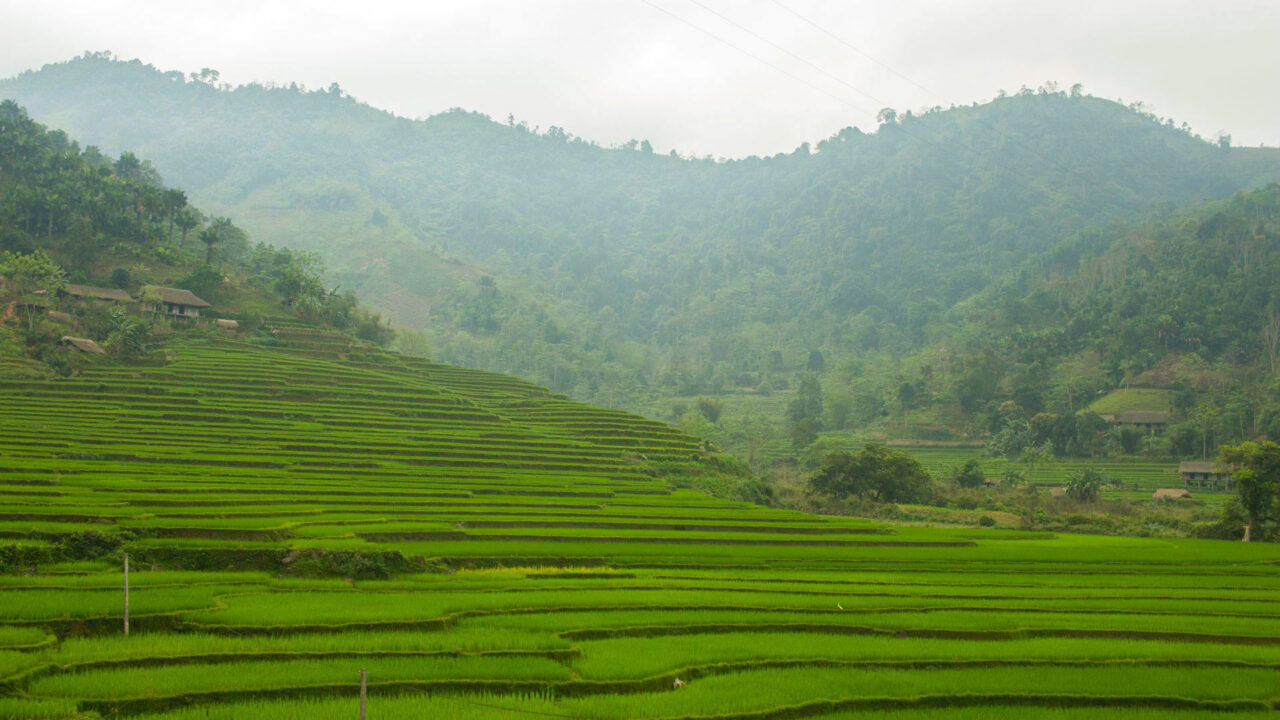
Most travelers in the north have more well-known destinations, such as Sapa or Ha Giang, on their radar. But the small district Xin Man, located between these two places, also has a lot to offer. It is here that you’ll find Na Rang, a 300-person village of the Tay. This ethnic minority makes up 2% of Vietnam’s population, predominantly spread out in small villages in the northern highlands. The Tay mainly live off rice cultivation as well as fish and livestock farming. They have their own language and culture.
The word “authentic” is often overused, but it really applies to a visit to Na Rang. For some, the atmosphere here is reminiscent of what Sapa was like before the tourist rush.
Adventurous Journey
Even getting to Na Rang is an experience. If you travel by motorbike, you can look forward to breathtaking views of majestic mountain ranges and endless green valleys around every corner. And also the occasional pothole and mud on the road, so as is common in the north, plan a bit more time than Maps suggests.
If you’re traveling without a motorbike, you can reach the village by local bus. There are several options:
1. If you’re coming from Hanoi, from the My Dinh bus station, you take a sleeper bus towards Ha Giang (190,000 VND). In the small town of Viet Quang, you then switch to the local bus, which takes you to Na Rang for another 50,000 VND. The entire trip takes about nine hours.
2. If you were already traveling around Ha Giang, you can board the local bus right there. It departs daily at 12.00 PM, takes five hours, and costs 60,000 VND.
The local bus has a few years under its belt, is relatively small, yet holds more people than you’d expect at first glance. Plus lots of packages, as it also serves as a mail van between the villages on the route. Longer stops along the way for tea or buying vegetables are not uncommon. You will most likely be the only non-local on the bus, making you a minor sensation. With some luck, you’ll find fellow passengers who speak a little English and may well invite you straight to their home.
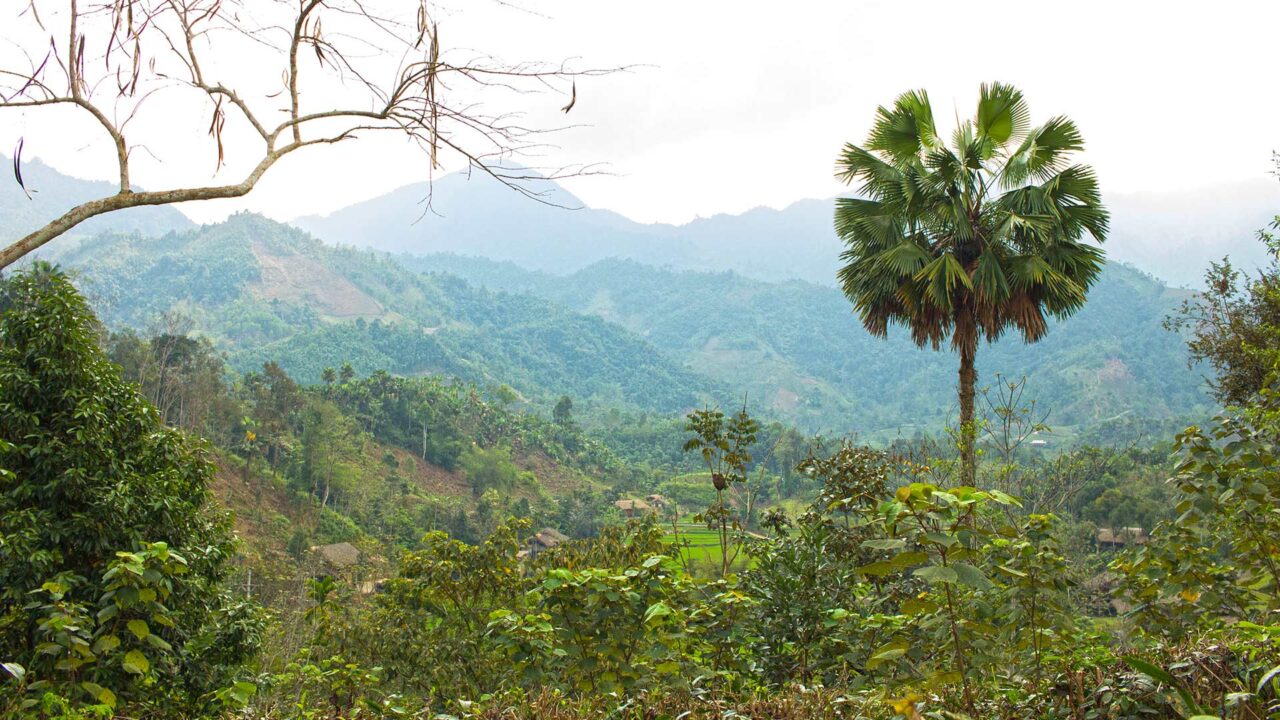
Living Like The Locals
We believe the best way to stay in Na Rang is at the Tho Homestay, about 800 meters from the village’s main street and thus almost in the center – if there is such a thing. This is where the Hoang Duc family lives, consisting of grandparents Cong and Tho, as well as their grandson Trung, who recently founded the homestay. Also living on the farm are several animals, such as fish, porcupines, water buffaloes, pigs, and chickens.
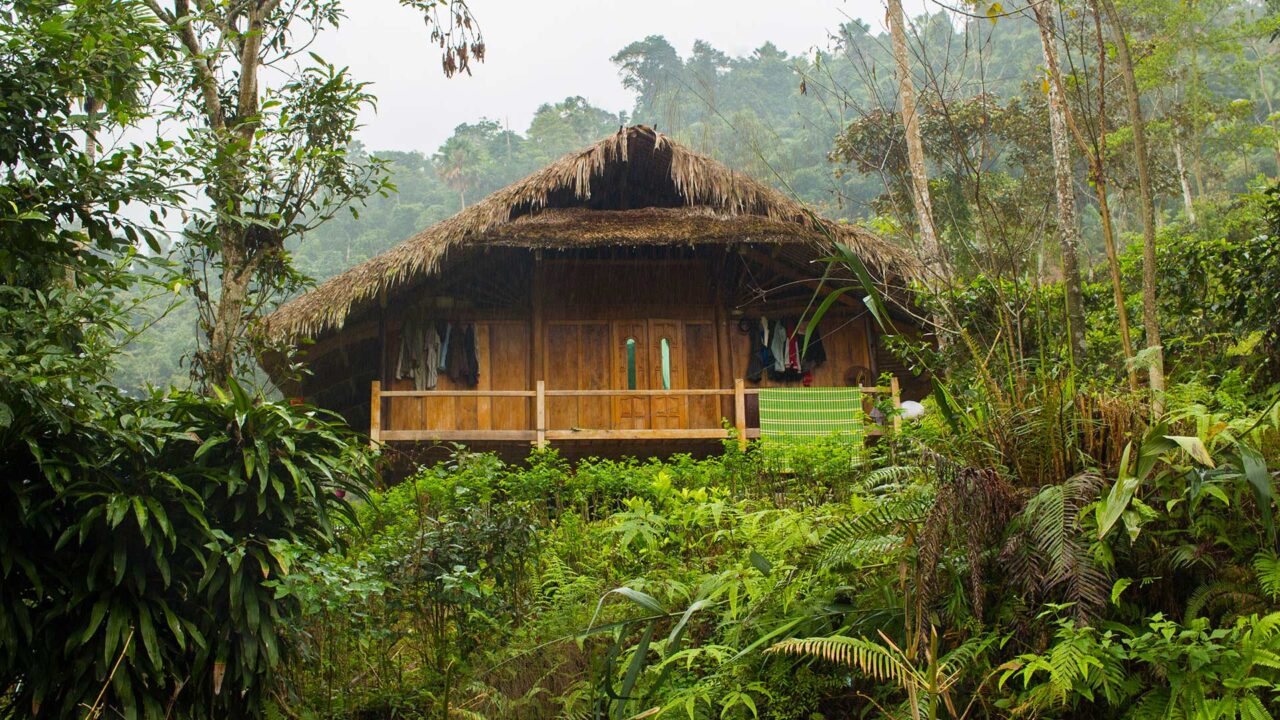
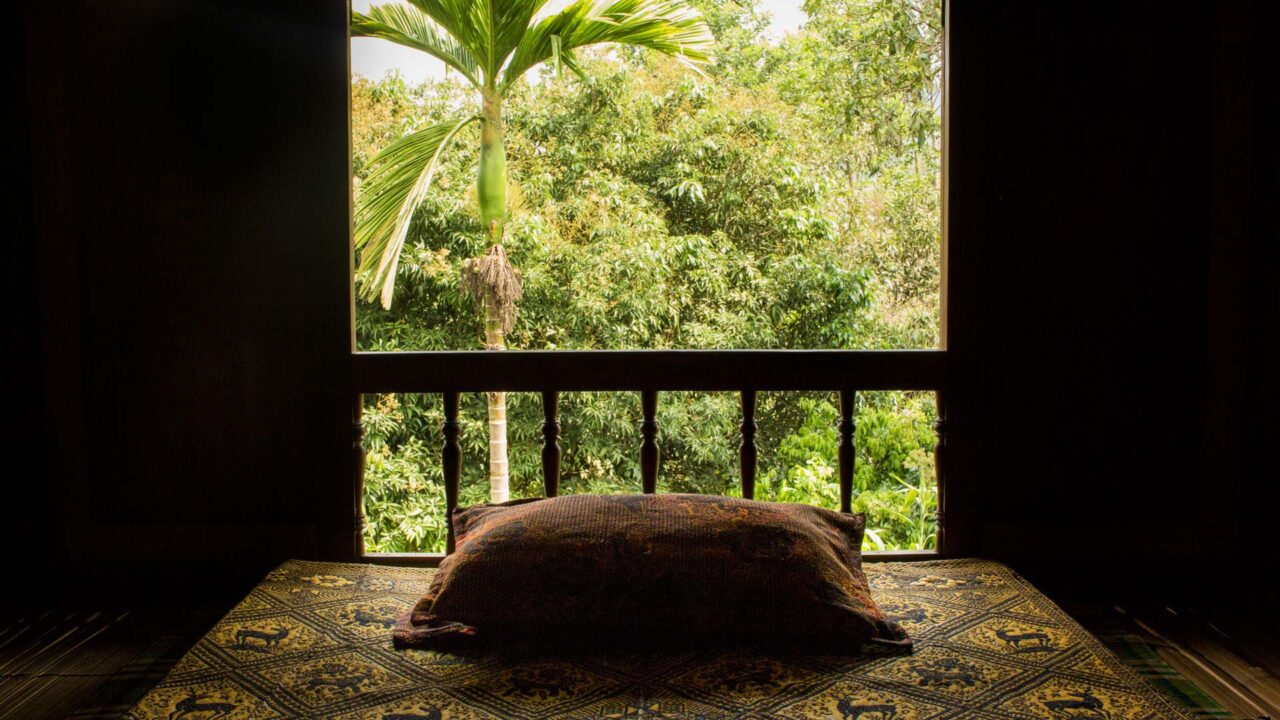
You’ll stay in the homestay with up to six other guests in a traditional wooden stilt house, participating directly in the family’s daily life. Breakfast – small, sweet pancakes – is included in the 4 euros per night price, and lunch and dinner can be added for about 2 euros per meal.
The food is prepared from fresh ingredients from the family’s own farm or the village. If you’re interested in ecofarming or traditional recipes, you’re always welcome in the garden and the kitchen. You can also learn more about growing green tea behind the house or have the grandmother introduce you to the art of bamboo weaving. Grandfather Tho also offers guided tours on foot or by motorbike in the surrounding area. This way, you can explore the region with someone who’s spent his entire life there.
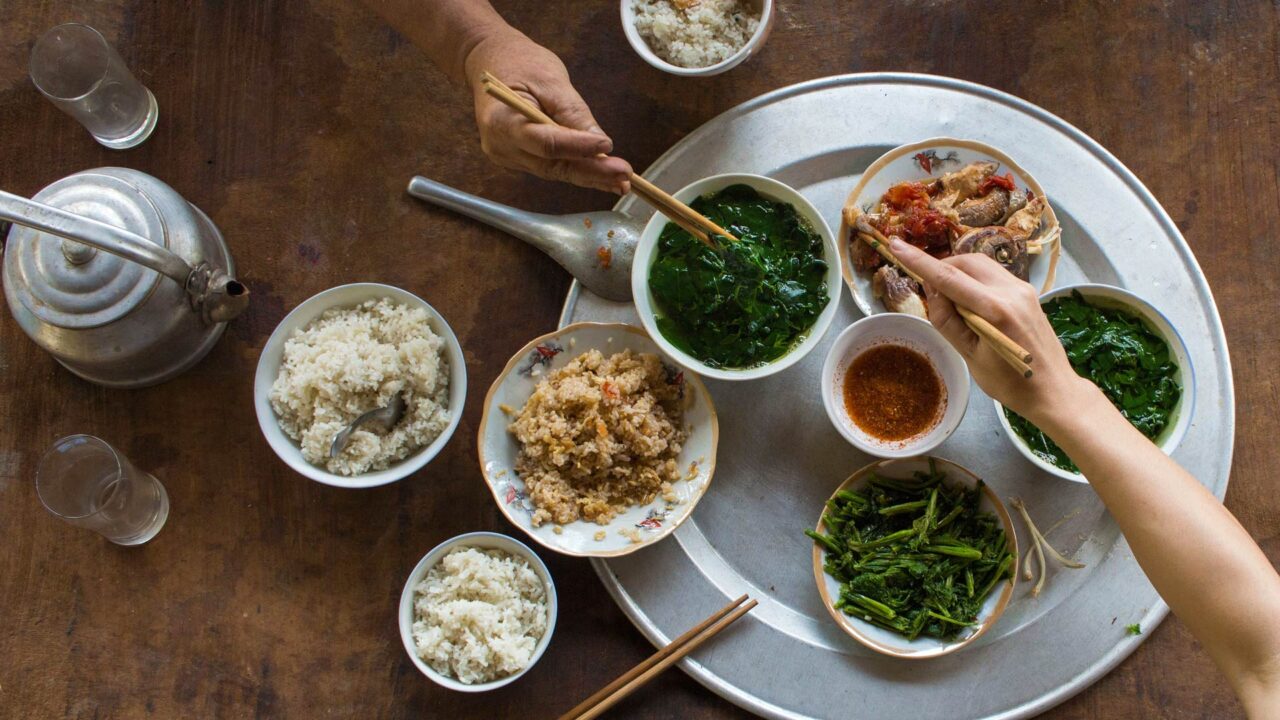
Threatened Traditions
Twenty-one-year-old Trung founded his homestay with the specific vision of helping preserve his minority’s culture. Because even though life here still seems partly like a journey back in time and almost untouched by the rest of the world, noticeable change is happening at the same time.
Not only the comprehensive power supply that’s existed for the past 6 months and access to high-speed internet are altering the Tay’s everyday life. Above all, the younger generation is drawn to cities, in search of more opportunities and a better future than in their hometown. The economic situation in the mountainous regions is worse than in the rest of the country, and minorities are still often left to fend for themselves. It’s not always easy (or sufficient) to make a living from agriculture, which is the main livelihood for most here.
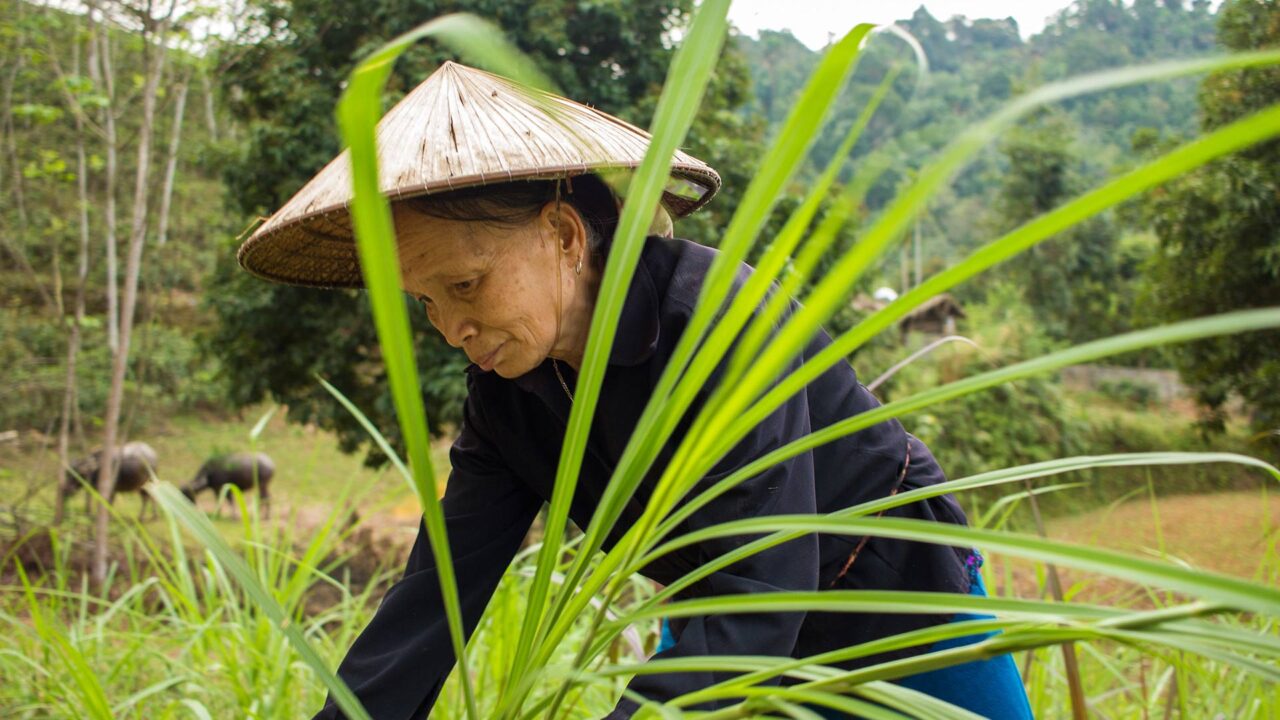

This development is a major threat to the culture of the Tay (and other minorities). When people leave, the traditions disappear with them. Trung hopes to create alternative perspectives with his homestay. If more travelers come, the village could experience a small upswing. The goal is by no means to replace agriculture with tourism. Rather, Trung hopes that an exchange with travelers will give the villagers a new perspective on their traditions so that more young Tay find the courage to stay. And travelers can learn a great deal from this exchange as well.
Fairy-Tale Surroundings
One of the most impressive aspects of visiting Na Rang is certainly the breathtaking nature of the surrounding area. The lush green rice terraces shine beautifully in the summer afternoon sun, and in the winding valleys between the imposing mountain ranges, you’ll find crystal-clear rivers and hidden waterfalls along the slopes.
A trip to the Thac Tien Waterfalls about 30 km away, also known as “Fairy Falls,” is worthwhile. Especially on days when gentle mist settles in the valleys and veils the mountainsides along the way, it’s easy to imagine that mythical creatures live here.
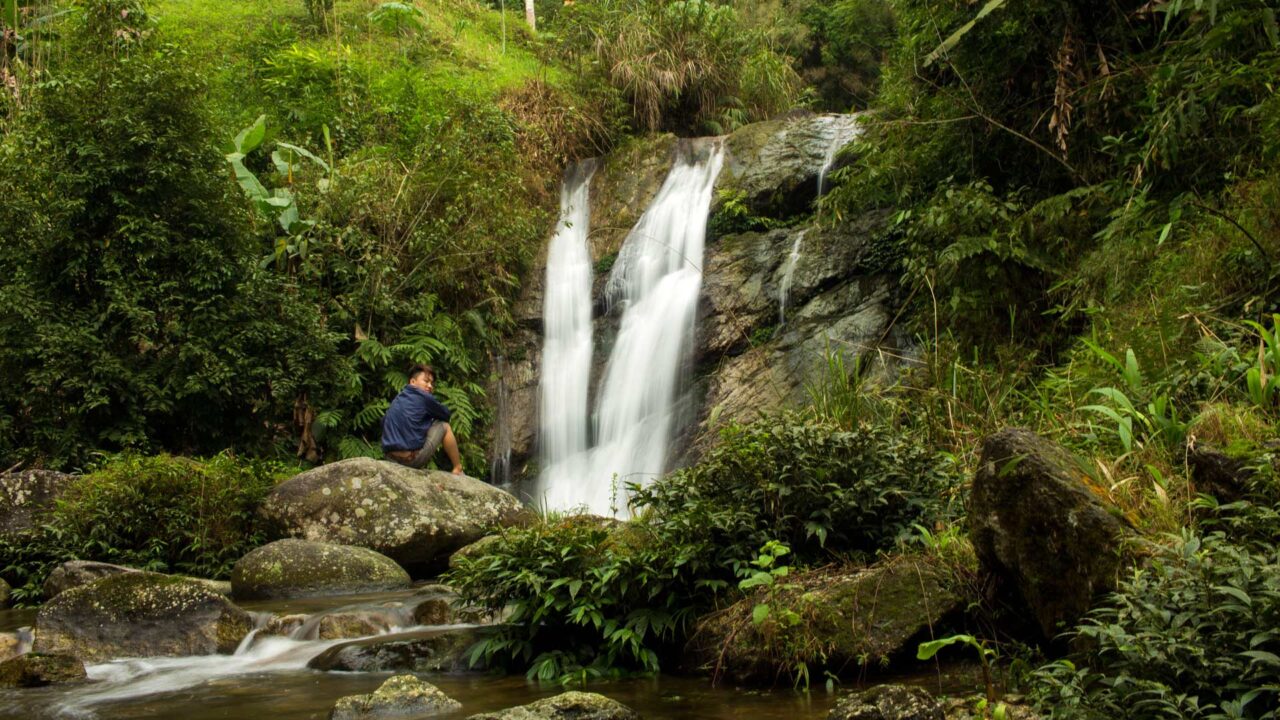
Closer by is the Thac Chan Waterfall, which you can also reach on foot after about an hour’s hike. If you’re up for a short, strenuous climb, you’ll be rewarded with a crystal-clear water basin in the middle of the waterfall, where you can enjoy a fantastic swim. The best part: you’ll typically find nobody else here.

Encounters With The Local Culture
A stroll through the streets of Na Rang is a wonderful way to get to know the authentic everyday life of the locals. After just a few steps, you’ll be met with friendly glances, warm smiles, and curious greetings. Often, the villagers will try to strike up a conversation using gestures or a few simple English words, despite potential language barriers. Children, in particular, are often thrilled about visitors and might invite you to a quick game of ball or other small activities.
With some luck, you might even be invited into a house of the Tay or Nung, where you’ll get a glimpse of their way of life. You may be offered a glass of homemade rice wine – a sign of hospitality deeply rooted in Vietnam. During the get-together, you’ll learn more about the traditions and customs of the local community and can experience the typically Vietnamese warmth.
Another highlight is the farmers’ market in nearby Na Chi, which offers a fascinating insight into rural market life. You’ll find everything necessary for everyday life there – from fresh foods and spices to household goods and clothing. Even less everyday products like dog meat, which is still consumed in some parts of Vietnam, and modern technology such as smartphones are part of the varied offerings. The market is not only a place for commerce, but also a social meeting point where locals exchange ideas and spread news.
If your trip coincides with a traditional holiday, you can enjoy an especially fascinating cultural experience. The Tay and Nung celebrate their festivals with colorful traditional attire, traditional singing, solemn ceremonies, and large feasts where you might even be welcomed as a guest. Such occasions allow you to experience the deeply rooted customs of these ethnic minorities firsthand and discover a piece of Vietnamese culture in an authentic way.
Have you ever heard of Na Rang in northern Vietnam? Or maybe you’ve already been there yourself? Please let us know in the comments!

Tobi
Hi, I'm Tobi, author, passionate travel blogger and founder of this blog. I've been traveling the world a lot since 2013, mostly in Southeast Asia, but sometimes also in Europe. The Thai island of Koh Phangan has become my home base when I'm not traveling. Find out more on our About Us page.